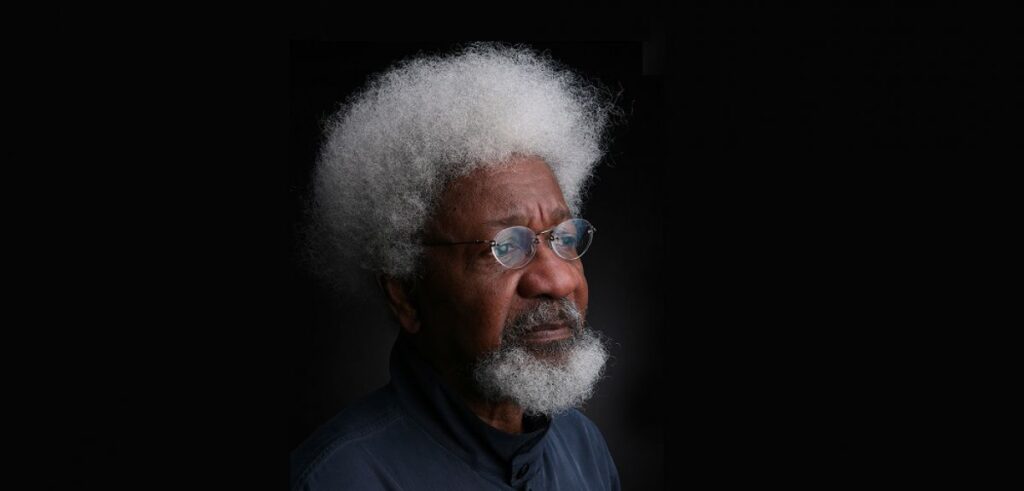
Fifty-five-year-old Michael Osakwe was diabetic and had high blood pressure. Married with three children, Osakwe, who worked as a security guard on a salary of N15,000 monthly, could not afford the drugs needed to manage the two chronic and fatal diseases. Osakwe developed stroke. But due to financial constraints, Osakwe was taken to a traditional medicine home for solution. He died weeks after.
Grace Nnaemeka was 44 years old. Mrs. Nnaemeka was unaware she had diabetes and hypertension until was truck with stroke. She died months after.
Mr. Osakwe and Mrs. Nnaemeka represent millions of Nigerians who had died and others who are living with stroke and its complications.
According to the Nigerian Medical Association (NMA), a stroke is a serious life-threatening medical condition that happens when the blood supply to part of the brain is cut off. Strokes are a medical emergency and urgent treatment is essential. The sooner a person receives treatment for a stroke, the less damage is likely to happen.
The main symptoms of stroke can be remembered with the word FAST: Face – the face may have dropped on one side, the person may not be able to smile, or their mouth or eye may have dropped.
Arms – the person with suspected stroke might not be able to lift both arms and keep them there because of weakness or numbness in one arm.
Speech – their speech may be slurred or garbled, or the person may not be able to talk at all despite appearing to be awake; they may also have problems understanding what you’re saying to them.
Time – it is time to dial 999 immediately if you see any of these signs or symptoms. Like all organs, the brain needs the oxygen and nutrients provided by blood to function properly. If the supply of blood is restricted or stopped, brain cells begin to die. This can lead to brain injury, disability and possibly death.
There are two main causes of strokes: ischaemic – where the blood supply is stopped because of a blood clot, accounting for 85 per cent of all cases and haemorrhagic – where a weakened blood vessel supplying the brain bursts.
There is also a related condition called a transient ischaemic attack (TIA), where the blood supply to the brain is temporarily interrupted. This causes what’s known as a mini-stroke. It can last a few minutes or persist up to 24 hours.
Certain conditions increase the risk of having a stroke, including: high blood pressure (hypertension); high cholesterol; irregular heartbeats (atrial fibrillation); and diabetes.
Medical experts claim incidences of stroke have increased in by 100 per cent over the last few decades. It is estimated that about one million people in the country suffer from a stroke every year and early treatment is the only way to reduce the increased mortality and morbidity.
They say while traditional medicine has made significant progress in stroke prevention and recovery, an integrated, comprehensive approach using natural methods is the key to reducing stroke’s burden.
Scientists insist that prevention is better than cure and making modest changes in lifestyle and incorporating healthy habits can help stave off stroke.
How turmeric can spice up stroke treatment by protecting and regenerating brain cells A drug derived from the popular spice turmeric could be used to treat stroke patients, researchers said.
A compound found in turmeric, a staple ingredient in curries has been found to help protect and regenerate brain cells after a stroke.
Scientists created a new molecule from curcumin, the crucial chemical in the spice, and used it in laboratory experiments, though it is yet to be tested on humans. They found it could repair damage at a molecular level and is linked to the survival of the brain cells’ neurons.
Paul Lapchak, director of translational research in the Department of Neurology at Cedars-Sinai Medical Centre in Los Angeles, presented the findings at the American Heart Association International Stroke Conference being held in the city.
He said the benefits of using the new drug, called CNB-001, were that it ‘is quickly distributed in the brain and moderates several critical mechanisms involved in neuronal survival’.
In the laboratory tests, it was found to reduce muscle and movement control problems when given up to an hour after a stroke.
Turmeric, a bright yellow spice used in many Indian, south-east Asian and Middle Eastern dishes, comes from a plant that is part of the ginger family and is already thought to have many health benefits.
Curcumin has been used for centuries in Ayurvedic medicine – practised on the Indian subcontinent – to treat a range of gastrointestinal disorders. Previous studies have also suggested it has anti-inflammatory properties and works as an antioxidant.
A study published the journal Frontier of Ageing and Neuroscience has demonstrated how curcumin in turmeric protects against ischemic stroke by titrating microglia/macrophage polarisation.
Microglia and infiltrated macrophages play critical roles in regulating immune and inflammatory responses after brain injuries. Accumulating evidence shows that microglia/macrophages assume different phenotypes with distinct functions during the course of ischemic brain injury.
The researchers concluded: “In conclusion, we demonstrate that curcumin has a profound regulatory effect on microglial responses, promoting M2 microglial polarization and inhibiting microglia-mediated pro-inflammatory responses. Curcumin post-treatment reduces ischemic stroke-induced brain damage and improves functional outcomes, providing new evidence that curcumin might be a promising therapeutic strategy for stroke.”
Ginger mitigates brain damage and improves memory impairment
A study published in the journal Evidence Based Complement Alternative Medicine demonstrated how ginger (Zingiber officinale) mitigates brain damage and improves memory impairment in focal cerebral ischemic rat.
“In conclusion, our data suggested that Zingiber officinale possessed the protective effect against focal cerebral ischemia induced by the occlusion of right middle cerebral artery. It could attenuate the memory impairment, neuro-degeneration, and brain infarct volume in this condition. The cognitive enhancing effect and neuro-protective effect of Z. officinale appeared to show almost the same magnitude as the positive control groups used in this study. Moreover, Z. officinale also showed multiple sites of action. Therefore, Z. officinale at the correct dose is a potential novel candidate for developing food supplement against focal cerebral ischemia. However, further clinical trial study is still required,” the researchers concluded.
Cerebral ischemia is known to produce brain damage and related behavioral deficits including memory. Recently, accumulating lines of evidence showed that dietary enrichment with nutritional antioxidants could reduce brain damage and improve cognitive function. In this study, possible protective effect of Zingiber officinale, a medicinal plant reputed for neuro-protective effect against oxidative stress-related brain damage, on brain damage and memory deficit induced by focal cerebral ischemia was elucidated.
The results showed that cognitive function and neurons density in hippocampus of rats receiving ginger rhizome extract were improved while the brain infarct volume was decreased. The cognitive enhancing effect and neuro-protective effect occurred partly via the antioxidant activity of the extract.
Zingiber officinale or ginger, member of the family of Zingiberaceae, is widely used as a spice. Moreover, it is used in Asian traditional medicine for various purposes including stomachache, nausea and diarrhea, and joint and muscle pain. In addition to the effects mentioned above, ginger extract also possesses antioxidant activity, neuro-protective effect, and anxiolytic effect. Because Z. officinale could scavenge free radicals, an important factor in producing brain damage induced by cerebral ischemia, the researchers hypothesised that the Z. officinale extract might be able to protect against brain damage and memory impairments induced by focal cerebral ischemia via reduction of oxidative stress.
Garlic
Garlic, a wonder plant, has many medicinal properties. It contains a molecule called ajoene, which prevents blood platelets from accumulating at one place and forming a blood clot, which causes a stroke. For better effects, consume raw garlic. One of the major reasons behind cardiovascular problems is high cholesterol level. And, garlic can help you decrease the level of bad cholesterol in the body and increase the levels of the good one.
Eating garlic can increase a person’s nitric oxide levels. Garlic is a natural antibiotic and antifungal food. Its main active ingredient, allicin, is often responsible for associated health benefits.
Some research suggests that garlic increases the body’s production of nitric oxide, which helps the smooth muscles to relax and the blood vessels to dilate.
These changes can reduce hypertension.
One study reported that garlic extract reduced both systolic and diastolic blood pressure in hypertensive people.
Garlic can enhance the flavour of many savory meals, including stir-fries, soups, and omelets. Using garlic instead of salt can further promote the health of the heart.
Dietary changes may extend life span by up to 10 years
A diet rich in legumes and whole grains can add up to 1 decade to a person’s life if they start eating for longevity early enough.
The study comes with a free, interactive online calculator people can use to explore the life expectancy benefits achievable by eating specific foods.
It may come as no surprise that the types of food people eat can have a profound impact on their health.
Having a general sense of what to eat for health is one thing, but the wealth of available information can be overwhelming.
A new study — which comes with a free, interactive online calculator Food4HealthyLife — makes it easy to estimate the beneficial effect of any food group on a person’s longevity. The research used comprehensive global data from the Global Burden of Diseases study.
Taking into account a person’s age and the proportion of different food groups they consume, the calculator models the life expectancy benefit that they may achieve.
The factors that influence one’s life expectancy extend beyond their diet, and the calculator predicts only the potential effect of dietary changes in isolation.
The scientists conclude that a sustained switch from a typical Western diet to the optimal diet from age 20 years could increase life expectancy by around 10.7 years for women and 13 years for men. The study was published in PLOS Medicine.
Tomatoes
Here is another reason to savour tomatoes: a recent study in Neurology finds they may help lower your risk of ischemic stroke—blockage of a brain artery that starves cells of oxygen and causes them to die. Lycopene seems to have some beneficial effects when it is in the form of fruits and vegetables. Also, tomatoes have antioxidants. Antioxidants are believed to help protect against cell damage from molecules known as “free radicals” and “singlet molecular oxygen”. Antioxidants are thought to work by reacting with an unstable molecule and bringing it under control. Some have suggested that antioxidants may have a protective effect against stroke by reducing damage to blood vessels.
Balanced healthy diet
Eating a balanced, nutritious diet is the key to stroke prevention. It is important to lower the amount of fat in the diet (saturated and trans fats) so as to reduce the risk of blood clots in the artery. The diet should include plenty of fruits, veggies, nuts, whole grains, seeds and beans to avoid suffering from a stroke.
Physical activity
Regular exercise is another important aspect of lowering the chances of a stroke. Cardiovascular exercises, including swimming, jogging, yoga, biking and more, increase the level of good cholesterol in the body and improve the resilience of the arteries and the heart. Moderate activity like riding a bike, walking, or yoga is recommended every day for 30 minutes.
Also, researchers have shown that exercise alters brain chemistry to protect aging synapses and enhanced nerve transmission in older adults who remained active.
When elderly people stay active, their brains have more of a class of proteins that enhances the connections between neurons to maintain healthy cognition, a University of California (U.C.) San Francisco study has found.
This protective impact was found even in people whose brains at autopsy were riddled with toxic proteins associated with Alzheimer’s and other neurodegenerative diseases.
The study was published in the January 7 issue of Alzheimer’s & Dementia: The Journal of the Alzheimer’s Association.
The beneficial effects of physical activity on cognition have been shown in mice but have been much harder to demonstrate in people.
Reduced salt intake
Salt intake of less than 5 grammes per day for adults helps to reduce blood pressure and risk of cardiovascular disease, stroke and coronary heart attack. The principal benefit of lowering salt intake is a corresponding reduction in high blood pressure.
No smoking
Nicotine from cigarette smoke thickens the blood and makes it more susceptible to clot. Smoking can lead to aneurysms and is linked to lung disease, heart disease and cancer. Smoking increases the chances of ischemic attack twofold and the risk of haemorrhagic stroke fourfold. It also causes atherosclerosis (fatty deposits) in the carotid artery, which is the main blood vessel to the brain.
Weight loss
Research has shown that people whose BMI (Body Mass Index) is over 30 are two to three times more likely to suffer from stroke compared to those with a normal weight (a BMI of less than 25). In addition, obesity also brings with it different complications like diabetes and high blood pressure, which raises the odds of having a stroke. Therefore, it is necessary to include physical exercises as part of the everyday routine.
Avoid physical and mental stress
Stressful conditions can increase the risk of a stroke. Inadequate rest, long working hours, ongoing emotional stress, or physically demanding tasks can all contribute to stress, releasing hormones that raise the blood pressure and increase the probability of blood clotting. Reducing one’s stress levels with the help of meditation, yoga helps to overcome feelings of anger, resentment, hatred, or repressed animosity, all of which can also contribute to the risk of stroke.
Control diabetes
Diabetes is a risk factor for stroke. The high blood sugar level in the body damages blood vessels, which makes it more likely for clots to form. To prevent strokes, it is important to keep diabetes under control. One should follow a nutritionist’s instructions, monitor the blood sugar levels, and implement other lifestyle changes, such as exercise and a healthy diet.
Good sleep
For those who want to reduce the risk of stroke, getting an optimal amount of sleep regularly is important. Researchers at the University of Alabama found a strong link between getting less than six hours of sleep and a higher incidence of stroke symptoms for people over 45.
Stay positive and optimistic
According to scientists at Harvard University, people with positive dispositions are far less likely to suffer from heart attacks or strokes. Studies have also found a 50 per cent reduction in cardiovascular disease for those who scored highest for optimism and vitality.
Lower blood pressure
High blood pressure is a huge factor, doubling or even quadrupling your stroke risk if it is not controlled. High blood pressure is the biggest contributor to the risk of stroke in both men and women. Monitoring blood pressure and, if it is elevated, treating it, is probably the biggest difference people can make to their vascular health.
Your ideal goal: Maintain a blood pressure of less than 135/85. But for some, a less aggressive goal (such as 140/90) may be more appropriate.
How to achieve it:
*Reduce the salt in your diet to no more than 1,500 milligrams a day (about a half teaspoon).
*Avoid high-cholesterol foods, such as burgers, cheese, and ice cream.
*Eat four to five cups of fruits and vegetables every day, one serving of fish two to three times a week, and several daily servings of whole grains and low-fat dairy.
*Get more exercise — at least 30 minutes of activity a day, and more, if possible.
*Quit smoking, if you smoke.
If needed, take blood pressure medicines.
If you drink — do it in moderation
Drinking a little alcohol may decrease your risk of stroke. Studies show that if you have about one drink per day, your risk may be lower. Once you start drinking more than two drinks per day, your risk goes up very sharply.
Your goal: Don’t drink alcohol or do it in moderation.
How to achieve it:
*Have no more than one glass of alcohol a day.
*Make red wine your first choice, because it contains resveratrol, which is thought to protect the heart and brain.
*Watch your portion sizes. A standard-sized drink is a 5-ounce glass of wine, 12-ounce beer, or 1.5-ounce glass of hard liquor.
Beets
Drinking beet juice can reduce blood pressure in the short and long terms. In 2015, researchers reported that drinking red beet juice led to lower blood pressure in people with hypertension who drank 250 milliliters, about one cup, of the juice every day for four weeks. The researchers noticed some positive effects within 24 hours.
In this study, those who drank one cup of the beet juice every day had an average drop in blood pressure of around 8/4 millimeters of mercury (mm Hg). For many, this change brought their blood pressure within the normal range. On average, a single blood pressure medication reduces levels by 9/5 mm Hg.
The researchers suggested that beet’s high levels of inorganic nitrate caused the reduction in blood pressure.
Watermelon
Watermelon contains an amino acid called citrulline, which may help to manage high blood pressure.
Citrulline helps the body to produce nitric oxide, a gas that relaxes blood vessels and encourages flexibility in arteries. These effects aid the flow of blood, which can lower high blood pressure.
In one study, adults with obesity and prehypertension or mild hypertension that took watermelon extract showed reduced blood pressure in the ankles and brachial arteries. The brachial artery is the main artery in the upper arm.
Researchers have also found that animals given a diet rich in watermelon had better heart health. In one study, mice that drank a solution containing watermelon juice had 50 percent less plaque in their arteries than the control group.
The mice that drank the solution also had 50 percent less low-density lipoprotein cholesterol, which many describe as bad cholesterol, and they showed 30 percent less weight gain than the control animals.
Lentils and other pulses
Lentils are a staple of many diets around the world, as they are an excellent source of vegetarian protein and fiber.
In 2014, researchers who studied the effects of a diet rich in pulses on rats reported decreased levels of blood pressure and cholesterol. A total of 30 percent of the rats’ diet comprised pulses, including beans, peas, lentils, and chickpeas.
Lentils are very versatile. Many people use them as a vegetarian alternative to minced beef or to add bulk to salads, stews, and soups. A range of lentils is available for purchase online.













